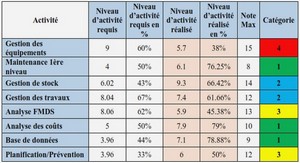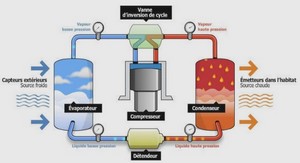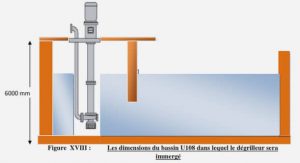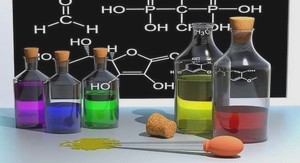Phosphaalcènes, phosphaallènes : synthèse, structure et calculs théoriques
Etude théorique des hétéroallènes lourds de la groupe
Dans ce chapitre, nous présentons une étude théorique DFT sur la stabilité de phosphagerma- et de phosphasilaallènes –P=C=E< (E = Si, Ge) et de ses isomères de formule brute CH3GeP afin de déterminer quelles sont les structures les plus stables. La géométrie de tous ces isomères a été optimisée au niveau B3LYP/6-31G (d, p), à l’aide du programme Spartan. L’analyse vibrationelle a également été effectuée afin de s’assurer que toutes les géométries trouvées correspondent à un minimum. L’état triplet du phosphagermaallène a également été étudié afin de voir si la préférence pour l’état singulet est conservée en passant de Ge=C à Ge=C=P. Cette étude théorique effectuée en utilisant des méthodes à plus haute corrélation a conduit à des résultats similaires ; elle a été étendue au phosphagermaallène substitué par des groupements méthyles MeP=C=GeMe2 et à tous ses isomères dans lesquels les atomes d’hydrogène ont été remplacés par des groupes méthyles ainsi qu’au phosphasilaallène HP=C=SiH2 et à ses isomères. Dans tous les cas, l’isomère le plus stable est un dérivé avec une triple liaison PGe (ou PSi) P≡E-CR3 (E = Si, Ge; R = H, Me); la différence d’énergie entre l’isomère a triple liaison GeP et le phosphagermaallène est moins importante lorsque H est remplacé par un méthyle. Ceci correspond à l’expérience puisqu’en protégeant l’entité P=C=Ge par des groupes très volumineux tels que Tip (2,4,6-triisopropylphényl), tBu et Mes* (2,4,6,tri-tert-butylphényl) on peut isoler le phosphagermaallène. Même si les effets stériques sont le moyen le plus efficace pour protéger une double liaison et empêcher sa dimérisation, une autre méthode consiste à faire varier les effets électroniques ; une étude NBO a donc été réalisée afin de déterminer l’influence de la nature de plusieurs substituants (groupes à effet inductif +I ou –I ou mésomère +M ou –M) sur la liaison double C=Ge. Des composés modèles HP=C=GeR2 et HP=C=GeRR »ont été étudiés (R = BH2, CH3, SiH3, NH2, OMe, F; R’ = H). Il a été constaté que l’interaction principale 57 contribuant à l’affaiblissement de la double liaison Ge=C est un transfert de densité électronique du doublet libre de l’atome de phosphore vers l’orbitale moléculaire antiliante localisée sur la liaison Ge-C (schéma 1). P C Ge H H H σ∗ Schéma 1 Les substituants avec des atomes possédant des doublets libres ou des orbitales p vacantes induisent d’autres types de transfert de charge qui aboutissent également à l’affaiblissement de l’ordre de liaison Ge=C, tandis que les groupes contenant des éléments du groupe 14 tels que Si et C sont jugés « inertes ». Une distinction entre les substituants aromatiques et aliphatiques n’a pas pu être faite à ce niveau de la théorie, mais l’influence de l’effet stérique a déjà été prouvée expérimentalement. Donc, il apparaît à partir de cette étude que l’utilisation de substituants encombrants organiques et silylés constitue le meilleur choix pour la stabilisation de l’entité P=C=Ge.
The instability of unsaturated compounds of group 14
elements makes computational chemistry a useful tool in the study of their structure and properties, providing the means to investigate them. Not too many attempts to use theoretical methods in the study of phosphagermallenes have been made: Escudié and coworkers rationalized the dimerization outcome of Mes*P=C=GeMe2 using HF calculations, which favors the head-to-tail dimerization of two Ge=C bonds or a Ge=C and a P=C bonds in contrast with the experimentally determined behavior [1]. However, the calculated difference in energy was only 1 and 6 kcal/mol respectively. Due to the experimental use of very bulky mesityl and supermesityl (2,4,6-tri-tert-butylphenyl) groups, the discrepancy with the calculations are not surprising since the large steric hindrance of substituents disfavor the head-to-tail dimers. Phospha- and diphosphaallenes were intensely reviewed and attempts to explain their electronic properties through theoretical chemistry have been made [2]. The models for double bonding of elements with the principal quantum number higher than 3 are discussed by Power in 1999 .
Structural minima in the isomeric space of model 1-3-phosphagermaallenes
In this section, we present a DFT theoretical study on the stability of phosphasilaallenes and phosphagermaallenes, in an attempt to explain the small number of such derivatives described to date . The geometries of all possible isomers of the model compound PCGeH3 were optimized at the level of the theory, using the Spartan package of programs [6]. A vibrational analysis was also carried out in order to ensure that all the geometries found correspond to minima. The triplet state of the phosphagermaallene was also investigated in order to see whether the preference for the single state is kept while 60 going from Ge=C to Ge=C=P. The results are reproduced in table II.1; some relevant geometrical parameters are also given. The relative energies (ΔE) compared to the global minimum of the series are given in kcal/mol
The most stable isomer is unexpectedly IX, containing the P≡Ge triple bond. This comes as a surprise, considering that the instability of multiple bonded germanium derivatives usually increases with the degree of unsaturation, and even the isomer containing the P=Ge bond is thermodynamically less stable than IX. In fact, previous calculations reported in the literature are in agreement with our results: the phosphorusgermanium triple bonds are computed to be energetically more favored than the double one [7, 8]. Electronegative substituents on the germanium atom increase the strength of the triple bond, while electropositive ones weaken it. The reason for which triple bonded germanium compounds are so scarce (and there are no known derivatives containing the P≡Ge unit reported up to date) must be of kinetical nature; no doubt, the use of bulky substituents providing a proper steric protection could lead to the isolation of such derivatives.
Introduction |






